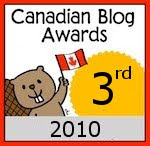The Canadian Press reports today on a precedent-setting ruling by the Ontario Court of Appeal in a case referenced as A.A. v. B.B.:
In affirming the non-biological mother's legal parentage, the Appeal Court exercised its inherent parens patriae jurisdiction to remedy what it found to be a "legislative gap" in the current statute, the Ontario Children's Law Reform Act.TORONTO -- An Ontario boy can legally have two mothers and a father, the province's highest court ruled Tuesday.
The same-sex partner of the child's biological mother went to court seeking to also be declared a mother of the boy.
... [The] Court was told the child has three parents: his biological father and mother (identified in court documents as B.B. and C.C., respectively) and C.C.'s partner, the appellant A.A.
The Act, on its face, clearly precludes a finding of dual motherhood. The Appeal Court, however, held that following the statute in this regard was contrary to the child's best interests, and issued a declaration affirming the parental status of the non-biological mother, in addition to the boy's two biological parents.
Excerpts from the ruling of Justice Rosenberg, for the Court, are below:
[1] Five-year-old D.D. has three parents: his biological father and mother (B.B. and C.C., respectively) and C.C.’s partner, the appellant A.A. A.A. and C.C. have been in a stable same-sex union since 1990. In 1999, they decided to start a family with the assistance of their friend B.B. The two women would be the primary caregivers of the child, but they believed it would be in the child’s best interests that B.B. remain involved in the child’s life. D.D. was born in 2001. He refers to A.A. and C.C. as his mothers.
The Importance of a Declaration of Parentage
[13] A.A. seeks a declaration that she is a mother of D.D. She and C.C. have not applied for an adoption order because, if they did so, B.B. would lose his status as D.D.’s parent by reason of s. 158(2) of the Child and Family Services Act, R.S.O. 1990, c. C.11. That section provides: “For all purposes of law, as of the date of the making of an adoption order … (b) the adopted child ceases to be the child of the person who was his or her parent before the adoption order was made and that person ceases to be the parent of the adopted child, except where the person is the spouse of the adoptive parent”.[14] A.A., B.B. and C.C. seek to have A.A.’s motherhood recognized to give her all the rights and obligations of a custodial parent. Legal recognition of her relationship with her son would also determine other kindred relationships. In their very helpful factums, the M.D.R. Intervenors and the Children’s Lawyer summarize the importance of a declaration of parentage from the point of view of the parent and the child:
· the declaration of parentage is a lifelong immutable declaration of status;
· it allows the parent to fully participate in the child’s life;
· the declared parent has to consent to any future adoption;
· the declaration determines lineage;
· the declaration ensures that the child will inherit on intestacy;
· the declared parent may obtain an OHIP card, a social insurance number, airline tickets and passports for the child;
· the child of a Canadian citizen is a Canadian citizen, even if born outside of Canada (Citizenship Act, R.S.C. 1985, c. C-29, s. 3(1)(b));[2]
· the declared parent may register the child in school; and,
· the declared parent may assert her rights under various laws such as the Health Care Consent Act, 1996, S.O. 1996, c. 2, Sched. A., s. 20(1)5.[15] Perhaps one of the greatest fears faced by lesbian mothers is the death of the birth mother. Without a declaration of parentage or some other order, the surviving partner would be unable to make decisions for their minor child, such as critical decisions about health care: see M.D.R. at para. 220. As the M.D.R. Intervenors say: “A declaration of parentage provides practical and symbolic recognition of the parent-child relationship.” An excerpt from the M.D.R. record dramatically demonstrates the importance of the declaration from the child’s point of view. I resort to this part of the M.D.R. record because D.D. is too young to provide this kind of information. The twelve-year old child of one of the applicants said this in her affidavit:
I just want both my moms recognized as my moms. Most of my friends have not had to think about things like this—they take for granted that their parents are legally recognized as their parents. I would like my family recognized the same way as any other family, not treated differently because both my parents are women....[21] The CLRA was progressive legislation, but it was a product of its time. It was intended to deal with the specific problem of the incidents of illegitimacy – the need to “remove, as far as the law is capable of doing so, a stigma which has been cast on children who in the nature of things cannot be said to bear responsibility for it” (p. 11). The possibility of legally and socially recognized same-sex unions and the implications of advances in reproductive technology were not on the radar scheme. The Act does not deal with, nor contemplate, the disadvantages that a child born into a relationship of two mothers, two fathers or as in this case two mothers and one father might suffer. This is not surprising given that nothing in the Commission’s report suggests that it contemplated that such relationships might even exist.
[22] When the scheme of the CLRA is considered, especially the relationship between the various provisions in Parts I and II, it is apparent that the Act contemplates only one mother and one father. The application judge drew attention to many of these provisions. He referred in particular to s. 8, which deals with the presumption of paternity. He was of the view that this section contemplated only one father. This view of the legislation is also consistent with the adoption provisions in the Act whereby no more than two persons can apply for an adoption order and the order extinguishes other parental status. I agree with that interpretation of the legislation.
[23] Further, in my view, an interpretation of the Act that allows for a declaration of a single father and a single mother is fortified by s. 12(2) of the Act, which provides that:
Two persons may file in the office of the Registrar General a statutory declaration, in the form prescribed by the regulations, jointly affirming that they are the father and mother of a child. [Emphasis added.]....
Parens Patriae Jurisdiction
[27] The court’s inherent parens patriae jurisdiction may be applied to rescue a child in danger or to bridge a legislative gap. This is not a case about a child being in danger. If the parens patriae authority were to be exercised it would have to be on the basis of a legislative gap.
[37] It is contrary to D.D.’s best interests that he is deprived of the legal recognition of the parentage of one of his mothers. There is no other way to fill this deficiency except through the exercise of the parens patriae jurisdiction. As indicated, A.A. and C.C. cannot apply for an adoption order without depriving D.D. of the parentage of B.B., which would not be in D.D.’s best interests.
[38] I disagree with the application judge that the legislative gap in this case is deliberate. There is no doubt that the Legislature did not foresee for the possibility of declarations of parentage for two women, but that is a product of the social conditions and medical knowledge at the time. The Legislature did not turn its mind to that possibility, so that over thirty years later the gap in the legislation has been revealed. In the result, the statute does not provide for the best interests of D.D....
[39] This holding would, it seems, be consistent with the position of the government. As stated earlier, the Crown in Right of Ontario did not intervene in this case, but its position on this issue is known. In M.D.R., the Crown took the position that the CLRA in fact could be interpreted to allow for a declaration that two women were the mothers of a child. Since I have found otherwise, it does no violence to the government's position to make the declaration sought by the appellant in this case through exercise of the parens patriae jurisdiction...
[41] Accordingly, I would allow the appeal and issue a declaration that A.A. is a mother of D.D. I would order that there be no costs of the appeal or of the application.
...the parens patriae doctrine has had its greatest application in the treatment of children, mentally ill persons, and other individuals who are legally incompetent to manage their affairs. The state is the supreme guardian of all children within its jurisdiction, and state courts have the inherent power to intervene to protect the best interests of children whose welfare is jeopardized by controversies between parents. This inherent power is generally supplemented by legislative acts that define the scope of child protection in a state.















1 comment:
It doesn't make sense to me that A.A. and C.C. couldn't apply for adoption. Yes, that would mean that B.B. loses parental rights, but so? It doesn't mean that B.B. couldn't be involved. It is a way that both A.A. and C.C could be legally recognized. This decision tries to hide the fact that it really pulled the statement that "there should be 3 parents" out of nowhere by saying that it's the only way to recognize A.A.'s rights.
Post a Comment